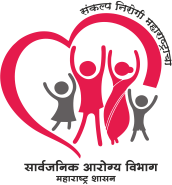National Programme For Prevention And Control Of Fluorosis (NPPCF)
Introduction
Fluorosis, a public health problem, is caused by excess intake of fluorosis through drinking water/food products/industrial pollutants, over a long period. It results in major health disorders like dental fluorosis, skeletal fluorosis, and non-skeletal fluorosis besides inducing ageing. These harmful effects, being permanent and irreversible in nature, are detrimental to the health of an individual and the community, which in turn, has an impact on growth, development, economy, and human resource development of the country.
Sources of Fluoride
The main source of fluoride intake are drinking water, food, drugs & industrial emissions. Permissible limit for fluoride, as per Bureau of Indian Standards (BIS), is 1.5 ppm in drinking water.Fluorine is abundant in nature, found in compound form like fluoride. Fluorine is essential for mineralization of bones & formation of dental enamels. Fluorine deficiency leads to dental caries. 96% of fluoride of body is found in bones & teeth. Normally small amounts of fluoride are required (0.5 to 0.8mg/lit) in drinking water prevalence.Fluoride endemicity has been reported in 7 districts of Maharashtra namely Yavatmal, Washim, Nanded, Beed, Latur, Chandrapur & Nagpur. Based on excess level of fluoride content in a number of districts, the States/UT’s have been classified as mild, moderate, and severe endemic States/UT’s of Fluorosis, which affects all ages.Fluorosis brings about changes in teeth and the skeletal system, which become irreversible in due course of time. Therefore, the focus of management of fluorosis is on prevention, health promotion, deformity correction, and rehabilitation.
Goal / Objectives
The objectives of the National Programme for Prevention & Control of Fluorosis are as follows:
1) To collect, assess and use the baseline survey data of fluorosis contents in drinking water sources.
2) Comprehensive management of fluorosis in the selected area.
3) Capacity building for prevention, diagnosis, and management of fluorosis cases.
Implementation of NPPCF in the state of Maharashtra
The NPPCF programme started in Maharashtra state in a phased manner from the year 2009-2010.
Old 6 Districts:
Chandrapur, Nanded – Phase 2-August 2010
Latur, Yavatmal, Nashik – Phase 3-July 2011
Beed – Phase 4-May 2012
(In Phase 1, Maharashtra was not included.)
Manpower support
The Deputy Director of Oral Health, Health Services, Mumbai, is appointed as a State Nodal Officer to coordinate the implementation of NPPCF.
7 District consultants are appointed for each district.
Guidelines for comprehensive management of fluorosis cases
Analysis of urine samples
A. Sample collection
- 15ml spot urine sample in 25 ml plastic screw cap bottles.
- Put 1-2 drops of Toluene (AR Grade).
- Properly labeled.
B. Transportation of samples
- Urine sample should be sent to district lab within a week’s time.
- Samples can be kept at room temperature.
- Report should be sent to State Nodal Officer.
Early Detection
The following criteria are used for confirming fluorosis cases:
- Any suspect case with high levels of fluoride in urine (>1mg/L).
- Any suspect case with interossieus membrane calcification in the forearm confirmed by X-Ray.
Prompt Intervention
Health Education
Do’s & Don’ts in relation to nutrition intervention in fluorosis
| Do’s | Don’ts |
|---|---|
| Calcium rich food | Black Tea |
| Milk | Black/Rock salt |
| Milk products | Tobacco |
| Green leafy vegetables | Supari |
| Vitamin C rich food | Fluoridated toothpaste |
| Iron rich food | |
| Citrus fruits | |
| Banana, Guava, Brinjal |
Treatment
- Medical treatment: No specific treatment; treatment supplementation with vitamin C & D, antioxidants, calcium & correction of malnutrition.
- Treatment of deformities: Orthoses, surgical shoes, physiotherapy, reconstructive surgery.
7 Districts under NPPCF for the year 2024-25
1) Nagpur
2) Nanded
3) Chandrapur
4) Beed
5) Latur
6) Washim
7) Yavatmal
Beneficiary:
as mentioned above
Benefits:
as mentioned above
How To Apply
Contact the District Nodal Officer for fluorosis management in your district.
Participate in the baseline survey for fluoride content in drinking water sources.
Follow the guidelines for health interventions, including health education and nutrition advice.
Seek medical treatment and rehabilitation for fluorosis cases through government health services.




